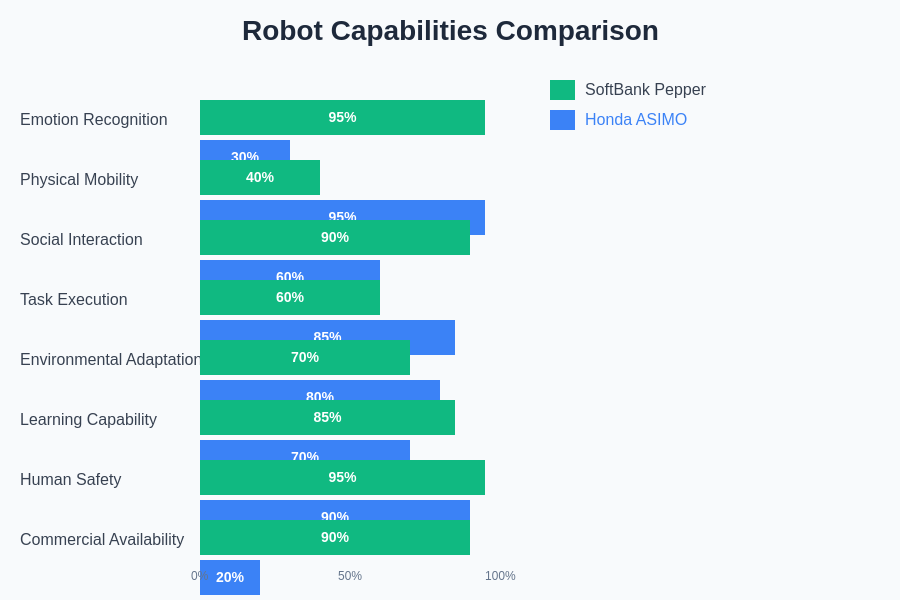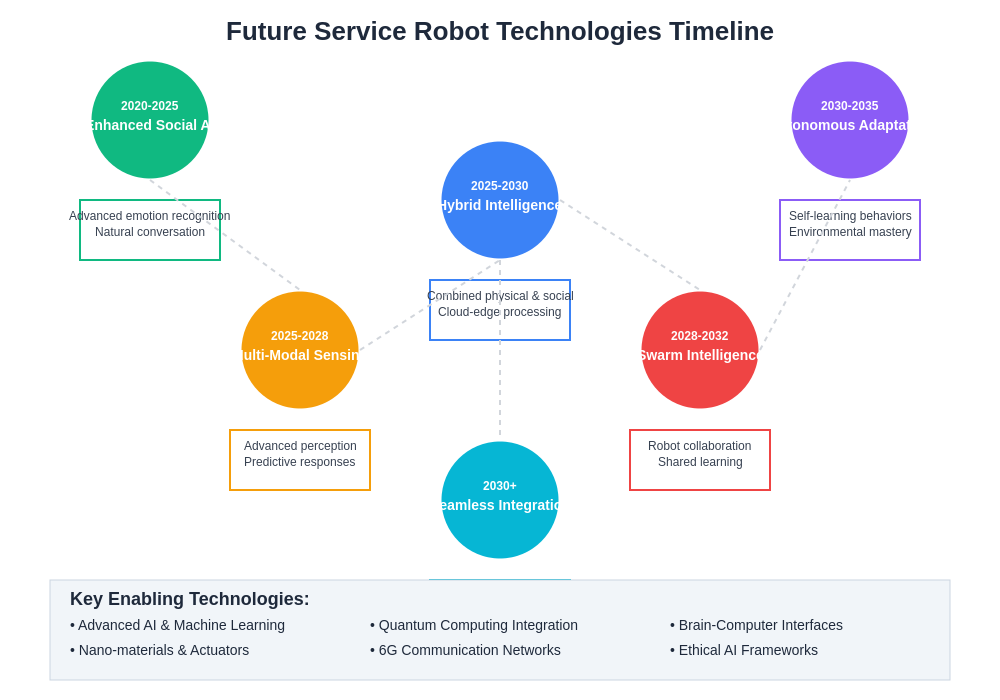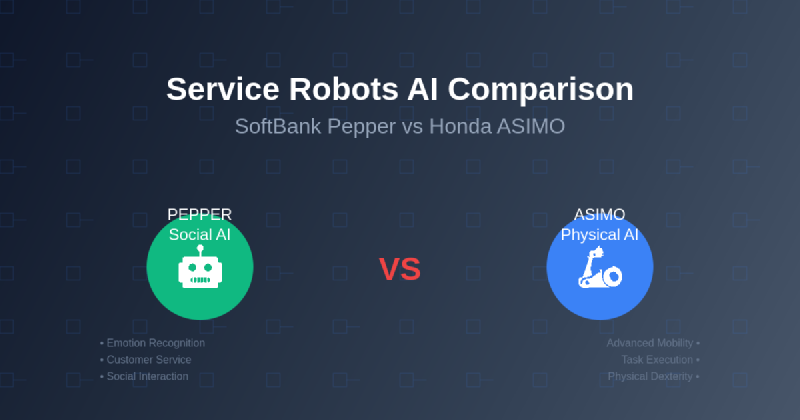The evolution of service robotics has reached a remarkable juncture where artificial intelligence meets physical embodiment to create sophisticated machines capable of meaningful human interaction. Two robots have emerged as iconic representatives of this technological revolution: SoftBank’s Pepper and Honda’s ASIMO. These pioneering machines represent fundamentally different approaches to service robotics, each offering unique insights into the future of human-robot collaboration and the role that artificial intelligence will play in our daily lives.
Explore the latest developments in AI robotics to understand how these technologies are rapidly advancing and reshaping industries across the globe. The comparison between Pepper and ASIMO reveals not just technical differences but philosophical approaches to how robots should integrate into human society, interact with people, and contribute to various service sectors.
The Genesis of Modern Service Robotics
The development of service robots represents decades of research into artificial intelligence, mechanical engineering, and human psychology. SoftBank Pepper, introduced in 2014, emerged from a vision of creating emotionally intelligent robots capable of understanding and responding to human feelings. Honda ASIMO, first introduced in 2000 and continuously refined until its retirement in 2018, focused on achieving human-like mobility and sophisticated physical capabilities that could operate seamlessly in human environments.
These two robots embody different philosophies about the role of artificial intelligence in robotics. Pepper prioritizes emotional intelligence and social interaction, utilizing advanced AI algorithms to recognize emotions, engage in conversations, and provide personalized experiences. ASIMO emphasized physical intelligence and mobility, demonstrating remarkable capabilities in walking, running, climbing stairs, and manipulating objects with precision that rivals human dexterity.
The technological foundations underlying these robots reflect the state of artificial intelligence and robotics at their respective times of development. Pepper incorporates cloud-based AI processing, emotion recognition systems, and natural language processing capabilities that enable sophisticated social interactions. ASIMO utilized advanced motion control algorithms, environmental mapping systems, and real-time decision-making processes that allowed for complex navigation and task execution in dynamic environments.
Design Philosophy and Target Applications
The fundamental design philosophies behind Pepper and ASIMO reveal contrasting visions for the future of service robotics. SoftBank designed Pepper as a social companion robot optimized for customer service, retail environments, healthcare settings, and educational institutions. The robot’s humanoid appearance features expressive eyes, articulated arms, and a mobile base that enables navigation while maintaining an approachable and non-threatening presence.
Honda’s ASIMO was conceived as a research platform and demonstration of advanced robotics capabilities, with applications envisioned in elderly care, disaster response, and general assistance tasks requiring sophisticated mobility and manipulation skills. ASIMO’s design emphasized human-like proportions and movement patterns, creating a robot that could navigate stairs, doorways, and furniture designed for human use without requiring environmental modifications.
Experience advanced AI capabilities with Claude to understand how sophisticated reasoning and natural language processing contribute to the development of intelligent robotic systems. The integration of advanced AI into robotics represents a convergence of technologies that enables machines to understand context, make complex decisions, and adapt to changing environments in real-time.
Artificial Intelligence Capabilities and Implementation
The AI systems powering Pepper and ASIMO represent different approaches to machine intelligence and autonomous operation. Pepper’s artificial intelligence focuses heavily on social intelligence, incorporating emotion recognition through facial analysis, voice tone interpretation, and behavioral pattern observation. The robot can identify when humans are happy, sad, angry, or surprised, and adjust its responses accordingly to provide appropriate emotional support or engagement.
Pepper’s natural language processing capabilities enable complex conversations in multiple languages, with the ability to understand context, maintain conversational flow, and provide relevant information or assistance based on user queries. The robot’s AI system continuously learns from interactions, building personalized profiles of frequent users and adapting its behavior to individual preferences and communication styles.
ASIMO’s artificial intelligence concentrated on environmental understanding and physical task execution. The robot’s AI systems process visual, auditory, and tactile information to create real-time maps of its environment, identify obstacles, recognize objects, and plan complex movement sequences. ASIMO could recognize individual faces, respond to voice commands, and execute sophisticated tasks like serving drinks, shaking hands, or playing soccer.
The machine learning capabilities of both robots demonstrate different approaches to AI development. Pepper utilizes cloud-based processing to access vast databases of conversational patterns, emotional responses, and behavioral models, enabling continuous improvement of its social interaction capabilities. ASIMO employed onboard processing for real-time decision-making, with machine learning algorithms optimizing movement patterns, balance control, and task execution efficiency.
Physical Capabilities and Mobility Systems
The physical manifestations of artificial intelligence in Pepper and ASIMO showcase contrasting approaches to robotic embodiment and environmental interaction. Pepper’s mobility system features a three-wheeled base that provides stable movement across flat surfaces while maintaining balance and smooth navigation through crowded environments. The robot’s articulated arms and expressive gestures enable non-verbal communication that complements its verbal interactions, creating a more natural and engaging user experience.
ASIMO’s bipedal locomotion represents one of the most advanced achievements in humanoid robotics, with sophisticated balance control systems that enable walking, running, and stair climbing with remarkable stability and grace. The robot’s movement algorithms continuously adjust posture, stride length, and weight distribution to maintain balance while navigating complex environments and responding to unexpected obstacles or disturbances.
The manipulation capabilities of these robots reflect their different design priorities and intended applications. Pepper’s arms and hands are optimized for gesturing and simple object manipulation, suitable for pointing, holding tablets, or performing basic greeting motions that enhance social interaction. ASIMO’s hands feature individual finger control and sophisticated grip patterns that enable complex manipulation tasks like opening bottles, carrying trays, or operating various tools and devices.

The comprehensive analysis of robotic capabilities reveals distinct strengths that align with each robot’s intended purpose and design philosophy. These quantitative assessments demonstrate how different approaches to artificial intelligence implementation result in specialized competencies that serve specific market needs and application scenarios.
Human-Robot Interaction and Social Intelligence
The approach to human-robot interaction represents perhaps the most significant difference between Pepper and ASIMO, reflecting evolving understanding of how artificial intelligence should facilitate meaningful connections between humans and machines. Pepper’s interaction model prioritizes emotional engagement and social presence, creating experiences that feel natural and emotionally satisfying for users across diverse cultural and linguistic backgrounds.
Pepper’s emotion recognition capabilities extend beyond simple facial expression analysis to include voice tone interpretation, body language assessment, and contextual understanding of social situations. The robot can detect when someone is stressed, excited, confused, or content, and adjust its communication style, topic selection, and interaction duration to provide appropriate support and engagement.
ASIMO’s human interaction capabilities focused more on task-oriented communication and collaborative work scenarios. The robot could recognize specific individuals, respond to voice commands and gestures, and coordinate activities with human partners in structured environments. ASIMO’s interaction style emphasized reliability, precision, and clear communication rather than emotional engagement or social companionship.
Enhance your understanding with Perplexity’s research capabilities to explore the latest developments in human-robot interaction research and emerging trends in social robotics. The field continues to evolve rapidly as researchers discover new ways to create meaningful connections between artificial intelligence and human emotional needs.
Industry Applications and Real-World Deployment
The practical applications of Pepper and ASIMO in real-world environments demonstrate how artificial intelligence capabilities translate into valuable services and user experiences. Pepper has found widespread adoption in retail environments, where the robot serves as a customer service representative, product information provider, and brand ambassador. Major retailers have deployed Pepper to greet customers, answer questions about products and services, and provide entertainment that enhances the shopping experience.
In healthcare settings, Pepper has been utilized to provide patient education, emotional support for elderly residents in care facilities, and assistance with routine administrative tasks that free human staff to focus on more complex patient care activities. The robot’s ability to maintain patience, provide consistent information, and offer non-judgmental interaction has proven particularly valuable in mental health and elderly care applications.
Educational institutions have embraced Pepper as a teaching assistant and interactive learning companion, utilizing the robot’s ability to engage students, provide personalized instruction, and maintain consistent enthusiasm for educational activities. The robot’s multilingual capabilities and cultural adaptability make it particularly effective in diverse educational environments.
ASIMO’s applications focused primarily on research and demonstration contexts, though Honda envisioned broader applications in elderly assistance, disaster response, and industrial settings. The robot’s advanced mobility and manipulation capabilities made it suitable for tasks requiring human-like physical presence and dexterity, such as delivering items, operating equipment, or providing assistance in environments where wheeled robots would be impractical.
Technical Architecture and AI Processing
The underlying technical architectures of Pepper and ASIMO reveal different approaches to implementing artificial intelligence in robotic systems. Pepper utilizes a distributed processing model that combines onboard computing for real-time interaction with cloud-based AI services for complex analysis and decision-making. This hybrid approach enables the robot to maintain responsive interaction while accessing vast databases of knowledge and sophisticated AI algorithms that would be impractical to run locally.
Pepper’s emotion recognition system processes visual data through computer vision algorithms that analyze facial expressions, body posture, and gesture patterns in real-time. Voice analysis components examine tone, pitch, rhythm, and linguistic content to infer emotional states and communication intent. The integration of multiple sensory inputs creates a comprehensive understanding of user emotional state that guides the robot’s response selection and interaction strategy.
ASIMO’s technical architecture emphasized real-time processing and autonomous operation without reliance on external computing resources. The robot’s onboard computers processed sensory data from multiple cameras, gyroscopes, accelerometers, and pressure sensors to maintain balance, navigate obstacles, and execute complex movement sequences. Advanced algorithms continuously optimized motor control, path planning, and task execution based on environmental feedback and mission objectives.
The artificial intelligence systems in both robots demonstrate the importance of sensor fusion and multi-modal processing in creating intelligent robotic behavior. Pepper combines visual, auditory, and interaction data to build comprehensive models of social situations and user preferences. ASIMO integrated spatial, motion, and tactile information to create detailed environmental models that supported sophisticated navigation and manipulation capabilities.
Evolution of AI Technology and Future Implications
The technological evolution represented by Pepper and ASIMO provides insights into the trajectory of artificial intelligence development in robotics and the emerging possibilities for next-generation service robots. Pepper’s focus on emotional intelligence and social interaction anticipates a future where robots serve as companions, therapists, and social facilitators in addition to their functional roles. The robot’s learning capabilities and personality development suggest possibilities for long-term relationships between humans and artificial beings.
ASIMO’s advanced physical capabilities and environmental adaptation point toward future robots that can operate seamlessly in human environments without requiring modifications to existing infrastructure. The robot’s demonstration of complex mobility and manipulation skills established benchmarks for human-like physical intelligence that continue to influence current robotics research and development efforts.
The convergence of technologies demonstrated by these robots suggests future service robots will combine emotional intelligence with advanced physical capabilities, creating machines that can provide both social companionship and practical assistance across diverse environments and applications. Advances in artificial intelligence, sensor technology, and mechanical engineering continue to expand the possibilities for sophisticated human-robot collaboration.

The technological roadmap for service robotics illustrates an evolution toward increasingly sophisticated and integrated systems that will fundamentally transform how artificial intelligence manifests in physical form. These developments promise to create robots that seamlessly blend the best aspects of social intelligence and physical capability while introducing entirely new paradigms for human-machine collaboration.
Economic Impact and Market Adoption
The commercial deployment and market reception of Pepper and ASIMO illustrate different models for introducing advanced robotics technology into mainstream applications. Pepper’s commercial availability and rental programs have enabled businesses to explore robotic assistance without substantial upfront investments, facilitating broader adoption and practical experience with service robotics across various industries.
The economic impact of service robots extends beyond direct sales to include reduced labor costs, improved service consistency, enhanced customer experiences, and new business models that leverage robotic capabilities. Retail environments utilizing Pepper have reported improved customer engagement, reduced wait times for information, and increased brand differentiation through innovative technology adoption.
ASIMO’s role as a research platform and technology demonstrator contributed to the broader robotics industry by advancing fundamental technologies, inspiring research directions, and demonstrating the potential for sophisticated humanoid robots. While not commercially deployed at scale, ASIMO’s influence on robotics research and development has contributed to numerous technological advances that benefit the entire robotics ecosystem.
The investment in robotic technology development by major corporations like SoftBank and Honda reflects the anticipated long-term value of artificial intelligence and robotics in addressing demographic challenges, labor shortages, and evolving service expectations. These investments continue to drive innovation and accelerate the development of more capable and affordable robotic solutions.
Challenges and Limitations in Current Technology
Despite their impressive capabilities, both Pepper and ASIMO face significant limitations that highlight ongoing challenges in service robotics and artificial intelligence. Pepper’s emotion recognition, while sophisticated, sometimes misinterprets social cues or fails to understand complex emotional states, leading to inappropriate responses that can frustrate users or create awkward interactions.
The robot’s conversational abilities, though advanced, are constrained by predefined response patterns and limited understanding of context, particularly in complex or ambiguous situations that require nuanced interpretation or creative problem-solving. These limitations become apparent in extended interactions or when users present unexpected queries or emotional needs.
ASIMO’s physical capabilities, while remarkable, required carefully controlled environments and could not adapt to the full complexity and unpredictability of real-world settings. The robot’s movement speed, energy consumption, and sensitivity to environmental conditions limited its practical utility outside of demonstration contexts.
Both robots face challenges related to cultural adaptation, with communication styles, social norms, and interaction preferences varying significantly across different cultural contexts. The development of truly universal service robots requires sophisticated understanding of cultural diversity and adaptive behavior that can accommodate different social expectations and communication patterns.
Future Directions and Technological Convergence
The lessons learned from Pepper and ASIMO continue to influence the development of next-generation service robots that aim to combine the best aspects of both approaches while addressing their respective limitations. Future service robots are likely to integrate advanced emotional intelligence with sophisticated physical capabilities, creating machines that can provide both social companionship and practical assistance across diverse environments.
Advances in artificial intelligence, particularly in areas like large language models, computer vision, and reinforcement learning, promise to address many current limitations in robotic understanding and adaptation. These technologies enable more nuanced conversation, better environmental understanding, and improved learning from experience that could overcome many of the constraints observed in current service robots.
The convergence of 5G communication, edge computing, and cloud-based AI services creates new possibilities for distributed intelligence that combines the responsiveness of local processing with the sophistication of centralized AI systems. This architectural evolution could enable service robots to access vast knowledge bases and sophisticated reasoning capabilities while maintaining real-time interaction and autonomous operation.
The integration of service robots into smart building systems, Internet of Things networks, and digital ecosystems suggests future applications that extend far beyond individual human-robot interaction to include coordination with other systems, predictive maintenance, and seamless integration into daily life and work environments.
The ongoing development of service robotics represents a fundamental shift in how artificial intelligence interfaces with the physical world, creating new possibilities for assistance, companionship, and collaboration that will reshape numerous industries and aspects of human experience. The pioneering work demonstrated by Pepper and ASIMO continues to inspire innovation and guide the development of increasingly sophisticated and valuable robotic systems.
Disclaimer
This article is for informational purposes only and does not constitute professional advice. The views expressed are based on publicly available information about SoftBank Pepper and Honda ASIMO technologies. Readers should conduct their own research and consider their specific requirements when evaluating service robotics solutions. The capabilities and performance of robotic systems may vary depending on specific implementations, environmental conditions, and use cases.
